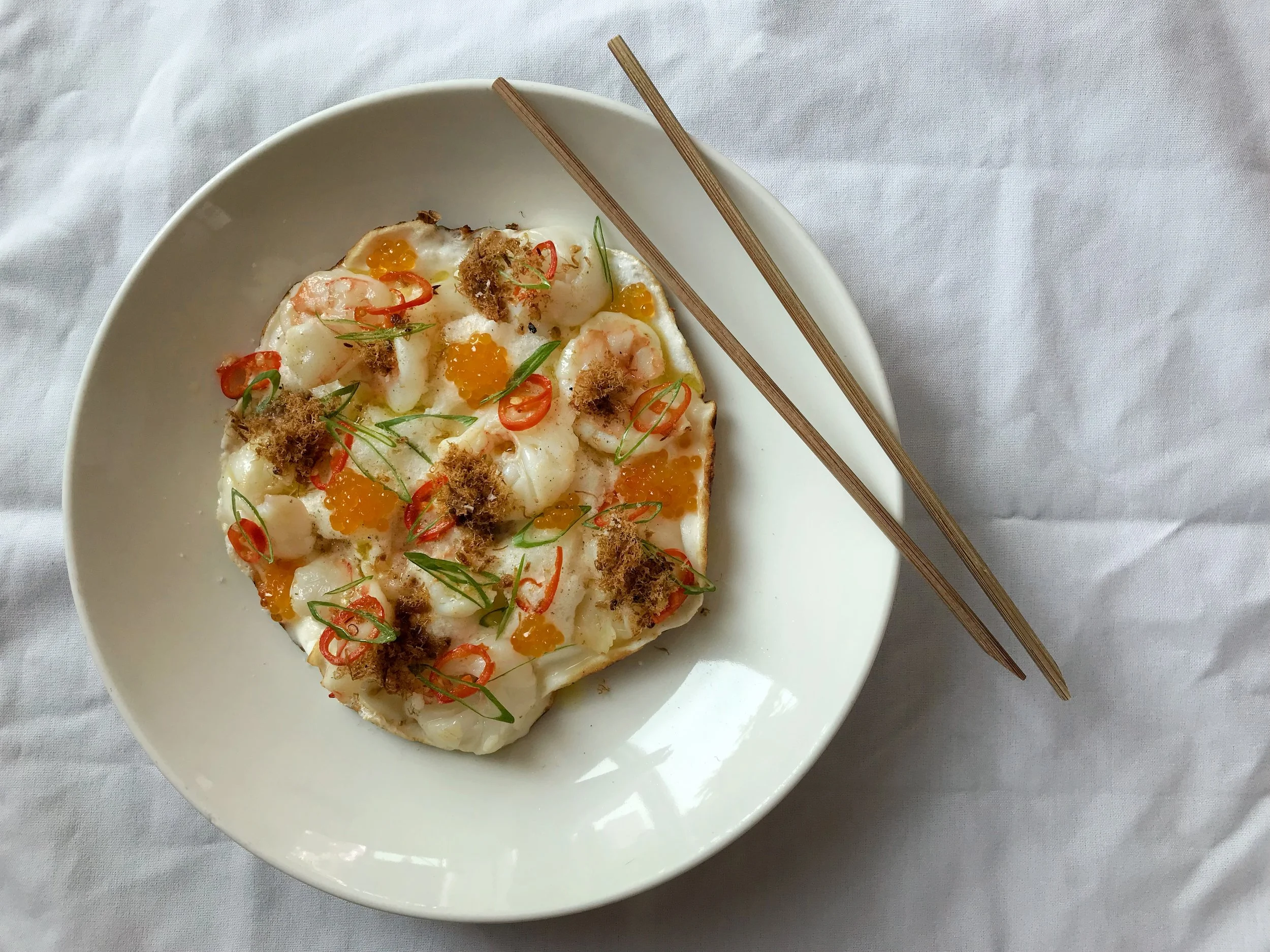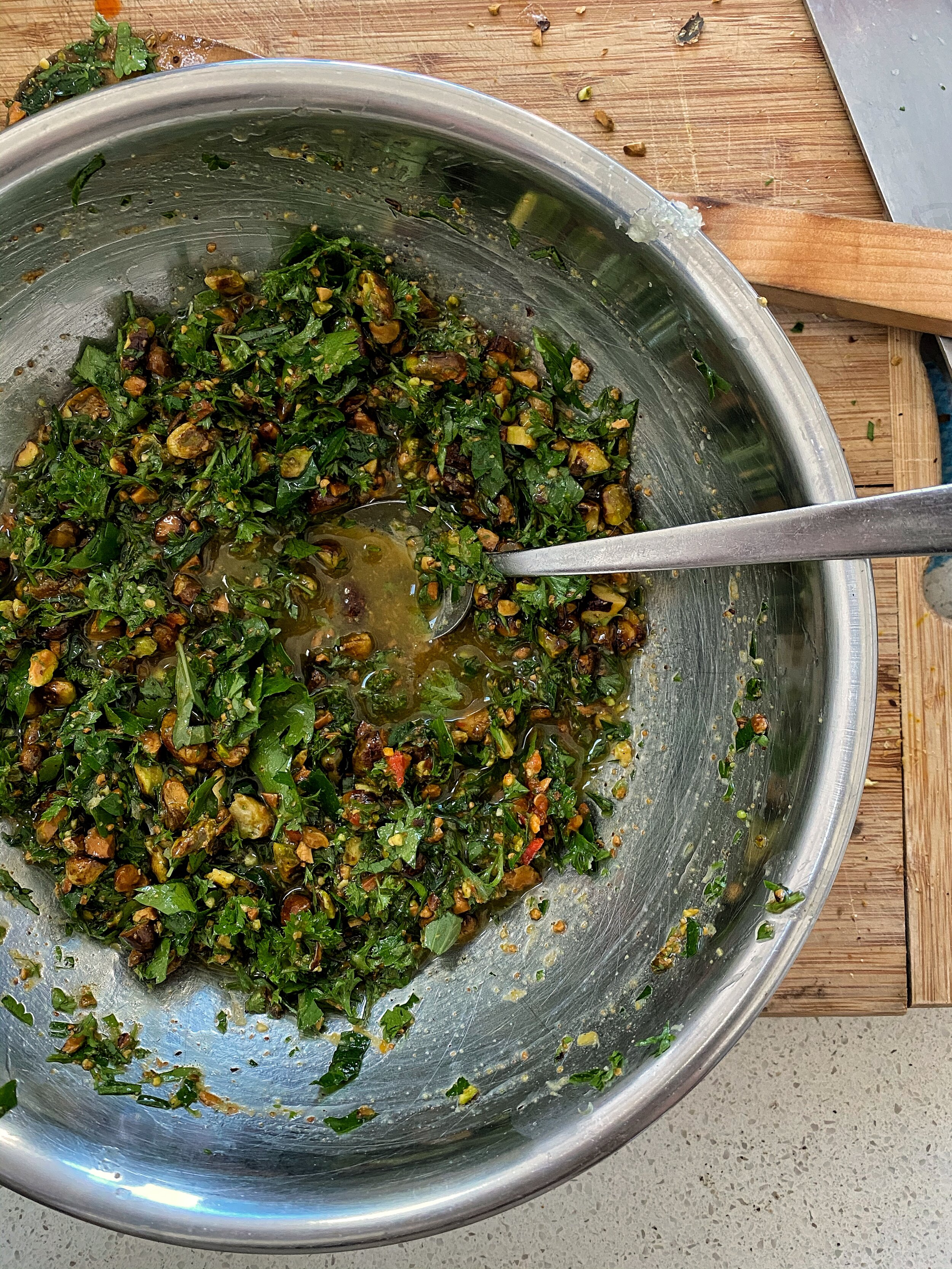I grew up going to Yum Cha every Sunday as a kid. Growing up in the very Anglo suburbs of Sydney, it was one of the traditions we had during the week where I felt we connected to our Chinese culture - unsurprisingly, it’s always about food. One of my favourite dishes is this one, little packages of sticky, fragrant lotus-scented rice, and succulent chicken and all kinds of other savoury, umami goodies packed within. Mum used to buy a few extra so we could take them to school, obviously I was THAT kid with the weird lunches (and proud of it, to this day).
Moving to Melbourne recently, the amount of Chinese grocers that stock these to take home and steam yourself are fewer and far between than Sydney, so I decided to learn how to make them myself. There are a heap of great recipes out there, and this one is an amalgam of a couple of the best, with a few amends of my own. These are great to make in a batch to store in the freezer, the perfect little savoury parcel of comfort food…and I can definitely vouch for the fact that they make a sustainably-packaged lunchbox all star.
For ingredients like dried lotus leaves, glutinous rice and any condiments your local supermarket doesn’t have (these days, the Asian grocery aisle is packed full of the staples you need), you can find them at any good Asian grocery store.
Makes about 8 parcels
Ingredients
2 1/2 cups glutinous rice
4 dried lotus leaves cut into half, soaked in hot water for 45 minutes
6 dried shiitake mushrooms, soaked in hot water for 30 minutes (reserve the liquid)
1/4 cup dried shrimp, soaked in hot water for 30 minutes (reserve the liquid)
For the marinated chicken
2 chicken thighs, chopped into chunks
1 tbsp Shaoxing rice wine
1 tbsp light soy
1 tbsp dark soy
1 tbsp oyster sauce
1/2 tsp Chinese five spice powder
1 tsp ground white pepper
The rest
1 thumb sized piece ginger, finely chopped
1 garlic clove, minced
1 heaped tbsp mushroom XO
2 lap cheong (cured Chinese sausage, found in the Asian aisle at most supermarkets), sliced into 1cm pieces
Sesame oil
For the seasoning sauce
1 tbsp Shaoxing rice wine
1 tbsp oyster sauce
1 tsp light soy
1 tbsp cornstarch
Vegetable oil
Salt flakes
White pepper, ground
Method
Rinse the rice thoroughly and then place in a rice cooker and cover with the reserved mushroom and shrimp liquid to one knuckle above the rice, cover and cook.
Place the chicken pieces in a clean bowl and add the marinade ingredients, combine thoroughly. Set aside for 15-20 minutes. When the mushrooms and shrimp are soft, squeeze any excess moisture from them and give them a rough chop.
In a heavy based pan or wok on medium to high heat. Add about a teaspoon of vegetable oil, then add the chopped lap cheong and shrimp. Stir fry for 2-3 minutes until fragrant and bubbling, then remove from pan and set aside. Add another good slug of vegetable oil to the pan, then add the ginger and garlic, and stir fry briefly, to allow the flavours to infuse into the oil. Add the chicken and stir fry for 3 minutes (it will be ‘just’ cooked for now, but they will finish cooking once steamed in their parcels). Add the mushroom XO and a few drops of sesame oil, then stir to combine, then pour in the cup of reserved mushroom/shrimp water. Add the seasoning sauce ingredients; shaoxing, oyster and soy sauces as well as the chopped shiitakes and stir to combine. Dissolve the cornstarch in a tablespoon of water and whisk into the sauce, to thicken. Add the lap cheong and shrimp mixture back to the pan, season with white pepper to taste and set aside (the mixture should be salty enough from the sauces).
Next, prepare the rice. Drain the sauce from the filling mixture and pour it into the rice, combine well.
When ready to assemble, trim the hard stem part of the lotus leaves to allow the parcels to fold easily. Place about a third of a cup or so of rice into the centre and flatten out to make a bed for your filling. Place a spoonful of the filling on top. Cover with about the same amount of rice, then fold in the two opposite sides of the parcel, then the other two, to form a sealed parcel. Flip over, so the edges are underneath, and set aside. Continue until all parcels are made; you should be able to make about 8 or so parcels or more, if you go smaller.
Steam the parcels for 20 minutes in a bamboo steamer, and they’re ready to eat! You can also cool them after steaming and store them in the freezer. Throw them straight into a steamer straight from frozen for 20-25 minutes when you’re ready to eat.



























